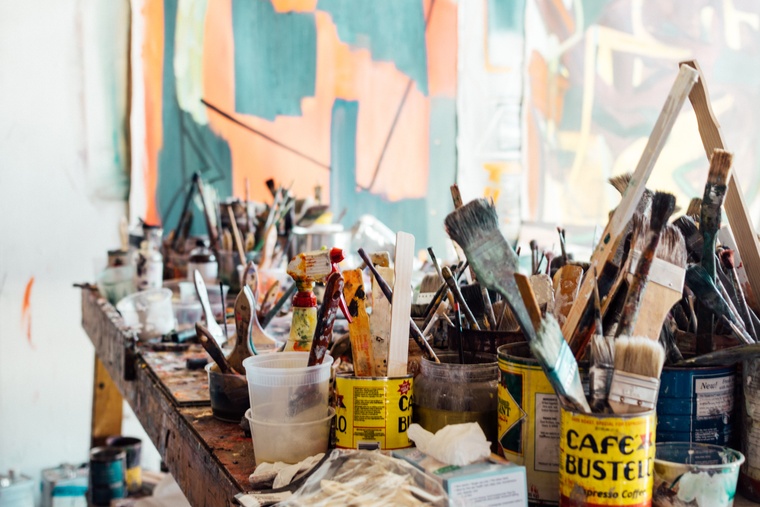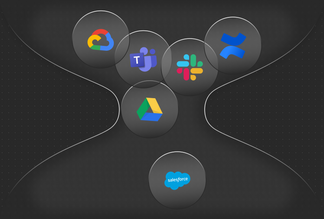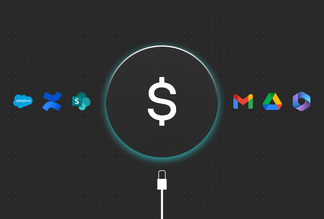

Tools that unlock creativity
Focus is about unlocking our creative potential. Deep work begins when we’re immersed in something challenging. And it's often where we master our craft and produce work of real value, the stuff we’re proud of that brings us back to the job.
But the typical workplace promotes context-switching and drains this healthy cognitive function.
Context switching happens when you move quickly from one task to the next, but it comes as an interruption. This can be person-based, like a co-worker pinging you for an update they need right now, or app-based, where you have to switch from a project-management tool to a goals spreadsheet in order to get all the information you need.
In a study run by Qatalog and Cornell University, 45% of survey respondents said context switching makes them less productive, and 43% said it is very tiring to constantly switch between tools and communications channels.
Focus is needed for creativity. And focus looks different for everyone. For me, I like to have my headphones in, window open, and everything on do not disturb. That’s when I can truly achieve that “flow” or deep work state.
At work, I’ve been able to communicate this with my team. And as a company, we’ve communicated a few working model pillars that enable everyone to find their focus — starting with flexibility.
Flexibility is needed for focus
When each team member is equipped for flexibility, they have the freedom to pursue their focus.
Deep work has become less and less easy to find in the maze of tasks and apps we’ve adopted. Because I have the freedom to arrange my workload and schedule in a way that prioritizes my deep work, I don’t have to restrict my creativity. And as a designer, that is absolutely necessary to get my job done well.
Focus can be hard to measure. You understand when it cannot be achieved, which looks like an interruption and feels like jogging up a never-ending hill, but it can be hard to showcase the value of focus until a project reaches completion.
However, flexibility is easily measured through team autonomy. In getting to know your team, you’ll very quickly understand if you are trusted enough to get your work done autonomously or not.
Granted, to have healthy autonomy you need enough intrinsic motivation to take initiative on your own. You need resources that help you independently analyze, evaluate, and strategize. You must adopt self-management methods that enable you to adapt to changes and manage their impacts. All of this is made easier with a work hub.
Operate autonomously with trust
When I was starting out in this industry as a designer at Wise, I had a team and managers that fully encouraged me to build my design skills, but they also taught me how to manage my time in a corporate setting and the importance of saying no.
Becoming a designer for a fast-moving startup can be quite overwhelming. There are a lot of different projects that you’re pulled into at once, and everyone wants their deliverables to be ready yesterday. Plus, when you’re building a brand, you need to set aside creative time to make sure your brand system stays aligned with company direction and your creatives are growing at the same pace you are.
At Wise (previously TransferWise), the work of the design team was very autonomous. Everyone had the opportunity to collaborate but each project had specific owners who would manage the timeline of deliverables, stakeholders, and establish what success looked like. Wise being a 2000+ person company meant the feedback culture was constant and intense. So I had to learn how to justify my designs and rationale quickly, in order to not be compromising on the quality of the design.
What helped me thrive in this environment was the trust that was given to us on day one. It actually surprised me at first how much ownership I was given, but it allowed me to feel valued and empowered. If you were part of the team, it was understood that you knew how to do good work, and having that sort of trust as a creative is necessary to taking the design risks needed to evolve a growing brand.
When trust is added to the equation, employees have the freedom to speak up, take risks, and fail. And how else is a company supposed to grow?
We talk a lot about trust at Qatalog as well. If you have a fully distributed team working across time zones, you need to trust that your team is supporting you and the work you’re doing. Luckily, I collaborate with a group of people who care about our product and our mission — but we also have a work hub to keep everything transparent and accessible.
Coordinate and cooperate with a work hub
Not all technology promotes context switching. Yes, software in the typical workplace causes disorganization, interruption, and frustration — which all cause a drag on our creativity.
I’ve worked with a lot of different apps, project management tools, design files, project briefs, random documents, Google sheets — everything under the sun. And as a designer, I find myself uniquely positioned so that I assist every team by working horizontally across them all, meaning I have to be familiar with all of their apps, tools, files, briefs...you get the idea.
Moments of creativity happen when different teams with different perspectives come together. But our disjointed work environment makes it harder for us to work on projects cohesively. A work hub becomes your digital office space that allows teams to share and coordinate work. It takes pressure off of individual employees by making accessibility and accountability the norm. And it leaves room for that perfect deep work time. You know the kind: where everything is going right, the sun is shining, and you haven’t been pulled away from your focus.
Qatalog’s work hub helps me manage information and the context that surrounds it. It helps keep my work accessible to other teams, and vice versa. That way I’m not designing in a silo, or my designs aren’t being implemented in a way they aren’t supposed to. There are checks and balances built-in with a work hub in a way that allows everyone to coordinate effectively, without endless meetings or messages back and forth.
Everything at work should be linked. And with a work hub, everything can be.


